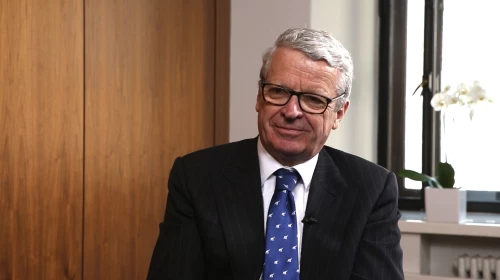Berndt Brunow has a long history of leading corporate transformation as a CEO, a chairman of a board of directors, and a board member for a variety of leading companies in the Nordic region. As a result of his firsthand experiences, he is uniquely qualified to discuss the respective roles of management and the board, as well as the challenges of gaining alignment during times of change.
Brunow recently spoke with Teemu Ruska, a senior partner in the Helsinki office of The Boston Consulting Group. Edited excerpts from that conversation follow.
You’ve been involved in several major transformations, both as chairman and acting CEO. In your experience, what is the first step in achieving the transformation’s goals?
Well, I think first you need to take one step back and say, “What caused the need for transformation?” If it was due to a crisis and came out of necessity, and you’ve lost the confidence of major stakeholders, you need to ask yourself, “Should the board drive the transformation?” And maybe more important, “Is this the right management for the transformation?” Only then, when you’ve dealt with those questions, can you start working on the actual issues.
Alignment on the process and metrics is critical for any transformation effort. How have you ensured this alignment?
It is very essential to set up a transformation office or project management office that is manned not by volunteers, but by people whom you truly trust. Interestingly, you don’t necessarily find these people in top management. They may be in different parts of the organization, because you need transformers in many areas. Make sure that the transformation office works day and night, but also see to it that the people involved get the right attention, resources, and appreciation. The board should meet more frequently during this period, and the project manager should report regularly to the board on the transformation’s progress. In the organization the manager reports, of course, to the CEO.
It has been said that transforming a company is like changing the tires of a car while it’s speeding down the road. What is the key to managing day-to-day operations during a major transformation effort?
Well, there are cars with tires that are so well balanced that they can continue to run even if a tire is lost. I think that’s the key. You need to communicate clearly to the whole organization the need for transformation. At the same time, you need to convey the message that there is a future only if we keep up the day-to-day work. The company still has customers, financial institutions, and other stakeholders. If we lose their confidence, then the whole transformation is not worthwhile.
Which aspects of the transformations you worked on were the most difficult and why?
Two aspects which I recall. One is how best to deal with people. Because time is often limited, you may have to use your intuition. Is this the person who will stay the distance and be there at the end, driving the company forward after the transformation? That’s tough. It’s also difficult, of course, to ask those who need to go to go. We also had to make some very tough deals with stakeholders. In one case in particular with a financial institution, the company was almost in receivership. We had to abstain from dividend distribution and agree that if change didn’t happen within a certain time frame, the financial institution would step in and take over the job. That’s when the fun is definitely over.
Looking back, what are the most critical success factors when you’re undertaking a major change initiative?
It’s all about people. You need to convey to the whole organization what the transformation is about and why we’re doing it, giving them the facts and numbers. Blue-collar workers are smart people. They want straight talk, not bull. They understand facts and figures, especially if the transformation is initiated by a crisis. But it takes time to get everyone on board, and it’s hard work. Because face-to-face contact is vital, it’s important to travel to different locations. At the same time, you need to continuously assess people and make changes to the organization.
What was the toughest decision you had to make in the course of these transformations?
Surprisingly, the toughest decisions involve the sudden hurdles or obstacles that you need to deal with on Monday afternoon because they need to be out of the way by Tuesday morning. In hindsight, maybe they’re not even that big. Then again, many small decisions are actually vital. Then there are the big decisions—like having to terminate the contract of the managing director or needing to find a new chief financial officer very quickly in the midst of a transformation.
With the benefit of hindsight are there any things that you would have done differently?
In all cases, we should have started the transformation earlier. And as chairman of the board, I would have worked less on trust and more on tough facts and figures. At the other end, we may have been premature in thinking that the transformation was completed. Perhaps we should have continued a little bit longer with the transformation office and the project itself. At my age, you know, you don’t change much, but you can be positively surprised by how valuable and important experience is.
What words of advice would you give to other executives who are leading major transformations?
Speed. Go for it, but go all the way. Transformation comes out of necessity. There are great companies that see transformation as part of continuously going forward, and they build a transformation culture. But if your company is more traditional and something external happens that threatens you, then time is already short—and there’s little time left. Speed.
About Berndt Brunow
At a Glance
Born in Helsinki, Finland
Year born: 1950
Education
2014, doctor of economics (honorary), Hanken School of Economics, Helsinki
1976, BSc, Hanken School of Economics, Helsinki
Career Highlights
April 2014-August 2014, interim CEO and interim president of Lemminkäinen
2002-2007, president and CEO of Fazer Group
2000-2002, president and CEO of Sanitec
Over 20 years of experience in executive positions in the forest industry
Outside Activities
Fazer Group, chairman
Lemminkäinen, chairman
Varma Mutual Pension Insurance, chairman
UPM-Kymmene, deputy chairman
Hartwall Capital, board member
C.E. Lindgren, chairman






